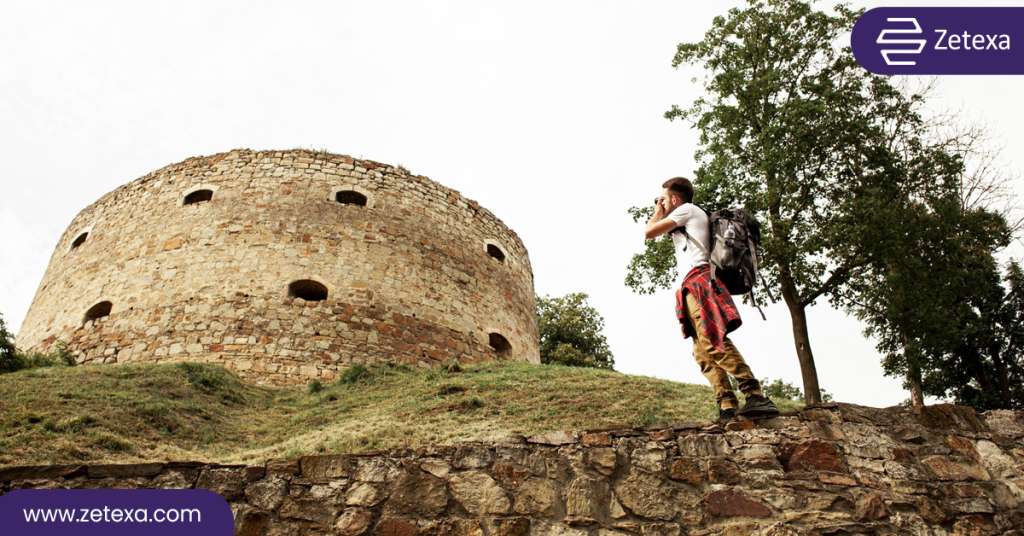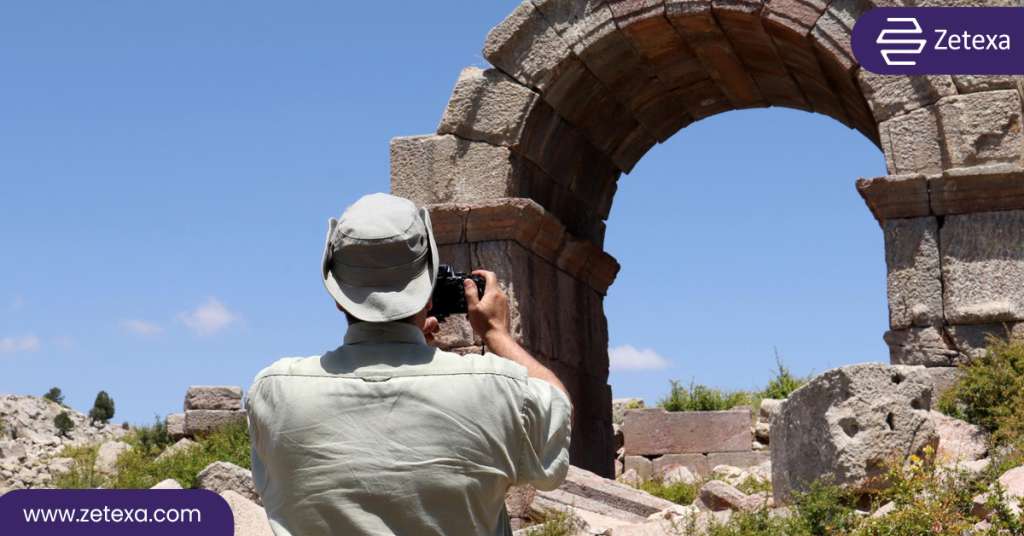Normandy is a northern province in France distinguished by brilliant architecture, scenic waterfalls and valleys, and beautifully structured cottages. There is a lot to explore in Normandy, from the sandy beaches of Normandy where D-Day to the antique buildings in Rouen and the magnificent white freshwater cliffs in Etretat. There’s so much to do in Normandy; whether you are a history buff, a nature addict, or a holidaymaker, you won’t despair.
In this article, we will look at the rich history and days gone by of Normandy by giving insight into its main sites, areas of interest and culture, including its history. This information will be helpful for people who may be going for the first time or people who have already been there.
During the sightseeing in Normandy, stay in touch with the wonderful world around you using the Zetexa France eSIM solution to stay connected everywhere you go.
The Historical Significance of Normandy
As far as the history is concerned, Normandy has it all, from the Viking settlement to the second world war, landing at Normandyy. Let’s try and look into some of the physical highlights of the history of the region in discussion.
1. The Viking Invasions and the Birth of Normandy
The timeline of Normandy began during the 9th century to the 10th century when Rollo and his fellow Vikings began their embark on shameless looting along the northern coast of modern-day France. Furthermore, in the year of 911, the Treaty of Saint-Clair-sur-Eptelegalisedd the claim of the Vikings over land that would eventually form the regions of Normandy. The Vikings slowly, over the years, integrated into the French customs and then the dukedom of Normandy emerged.
This Viking legacy can still be seen through place names, local cultures and the many extraordinary ruins of the Anglo-Saxonon fortifications present in Rouen, for example.

2. The Norman Conquest of England
One of the most defining events in the timeline of Normandy is the invasion of England by the Normans, which was led by William the Conqueror in the year 1066. William was the Duke of the region of Normandy and, with this successful invasion, claimed the English Throne and changed British History forevermore.
In order to honourr this achievement, the Bayeux Tapestry was produced, which is now kept in Bayeux. This wo, developed before the battle of Hastings and the conquest of England, brings together a number of events in detail. Anyone interested in the history of this notable event should visit the Bayeux Tapestry.
3. The D-Day Landings and World War II
For the consideration of the present century, probably the D-day landings on the beaches of Normandy on June 6, 1944, can be singled out as the factors that impacted greatly normandy the most. It is on the beaches of Normandy where the American, British and Canadian forces played a great part in defeating Nazi Germany.
Now recognised as famous battle sites, The beaches of Normandy – Utah Beach, Omaha Beach, Juno Beach, Sword Beach and Gold Beach are reminders of the many men who died for the free world. Also Normandy American Cemetery, Pegasus Bridge Museum and Utah Beach Museum are places where this great event can be understood further by the visitors.
The Charm of Normandy’s Scenic Beauty
Definitely, the historical importance of Normandy is beyond any debate but the region also possesses some of the most picturesque scenery across France. From its rugged coast to its enchanting rural areas, Normandy is a peaceful and lovely getaway.
1. The Cliffs of Étretat
The Cliffs of Étretat has got to be one of the most important natural features in Normandy, located along the region known as the Alabaster Coast. The presence of these crystallite white or porcelain cliffs naturally cut off the land from the sea, making breathtaking sights that have been an inspiration to many artists and photographers. There are also other unique characteristics of the area, for instance, the “Arch” and “Needle”, which many visitors find attractive.
When in the area, tourists can walk along the cliffs as they offer splendid views of the coast and the English sea. If one is getting bored or is more interested in urban civilisations, the town of Étretat also has fascinating little cafés, elegant galleries, and streets to wander in.
2. The Abbey of Mont-Saint-Michel
Mont-Saint-Michel is a beautiful rocky islet which is located in Normandy, the northwestern part of France. Being one of the most famous places across France and a UNESCO World Heritage Site, this ancient medieval abbey looks magnificent as it is situated on an islet that is surrounded by tidal waters. Out of the many ancient places across France, this particular abbey has been one of the major religious centres for years and is the epitome of French culture and faith.
Through the narrow streets of Mont-Saint-Michel, it will be possible to visit the Abbey and appreciate the views of the bay. The island of Mont-Saint-Michel is also known to have quaint shops and restaurants where dishes,s including the omelettes of Mount Saint-Mich, el, are offered.

3. Normandy’s Countryside
There is more to Normandy than its coastline, as it is also famous for its open fields, which are filled with hills, farms, and beautiful villages. The region is also known for the sheer amount of apples that grow in the region and is processed for its cider and calvados, an apple brandy.
There are excellent conditions for cycling and hiking in the countryside, where many paths cut across the beautiful scenery. Some of the other areas are Honfleur, with its delightful harbour, and Deauville, the more sophisticated beach resourcess of Normandy.
Normandy’s Historic Towns and Villages
There are many significant towns and communities within Normandy, some of which are of great significance to history and have their own character. Here are a few of the fascinating places to see in the region.
1. Rouen
Rouen is resided within the Normandy region; it is the capital of the Normandy region and it is filled with a lot of history. Rouen is famous for being the place where Joan of Arc was burnt on the stake in 1431 and is home to many Cathedrals, among them being the beautiful Notre Dame Cathedral, Rouen, which was a subject of several of Claude Monet’s artworks.
The key to this point is to make sure the medieval core possesses exclusively pardon houses, narrow streets and beautiful town squares. The Rouen’s cafes and markets are also good places to make the most of such a place.
2. Bayeux
Asiago is another nice city that is famous for the Bayeux Tapestry, which displays the history of England’s invasion by the Normans. The townspeople are equally enthusiastic about there is splendid cathedra and the quiet ambience there abounds. Another reason for the popularity of the town is the American sceptre to the D-Day beaches, which has grown out seeking to understand more about World War II.
3. Honfleur
Nice is well’s own line is a picturesque setting favourite port town on the seine estuary with a quaint oldharbourr populated with witmulticoloureded houses. The town and its sights have been an artist’s retreat for many years, with stunning views and pretty streets hindering the beauty of many paintings. The town is also famed for its seafood alongside its delicacies. As such, dining is lovely by the shores.
Conclusion
Normandy is a region where there is always a part of the history and beauty, as well as a mixture of the two. The region consists of the beaches where D-Day was fought, the streets of Medieval Rouen, the high which stand above the port of Honfleur and the rugged cliffs at Ètretat.
It is a place full of history and natural beauty that will surely leave you in awe. With the help of Zetexa’s France eSIM solutions that means users will not be offline, and there is an opportunity to actively reflect every moment, making the very best out of the travel.

Download:
ZetSIM App from the Google Play Store
FAQs
Normandy is known for its rich history, including the D-Day landings, Mont-Saint-Michel, and stunning coastal scenery.
D-Day Beaches: Historic World War II sites.
Mont-Saint-Michel: A breathtaking island monastery.
Rouen: Home to Joan of Arc’s history and Gothic cathedrals.
Honfleur: A picturesque harbor town.
The ideal time is April to October, with pleasant weather and cultural festivals.
Stay connected for GPS navigation, translation apps, and travel bookings without depending on spotty Wi-Fi.
With seamless European coverage, Zetexa eSIM ensures hassle-free connectivity throughout France.



